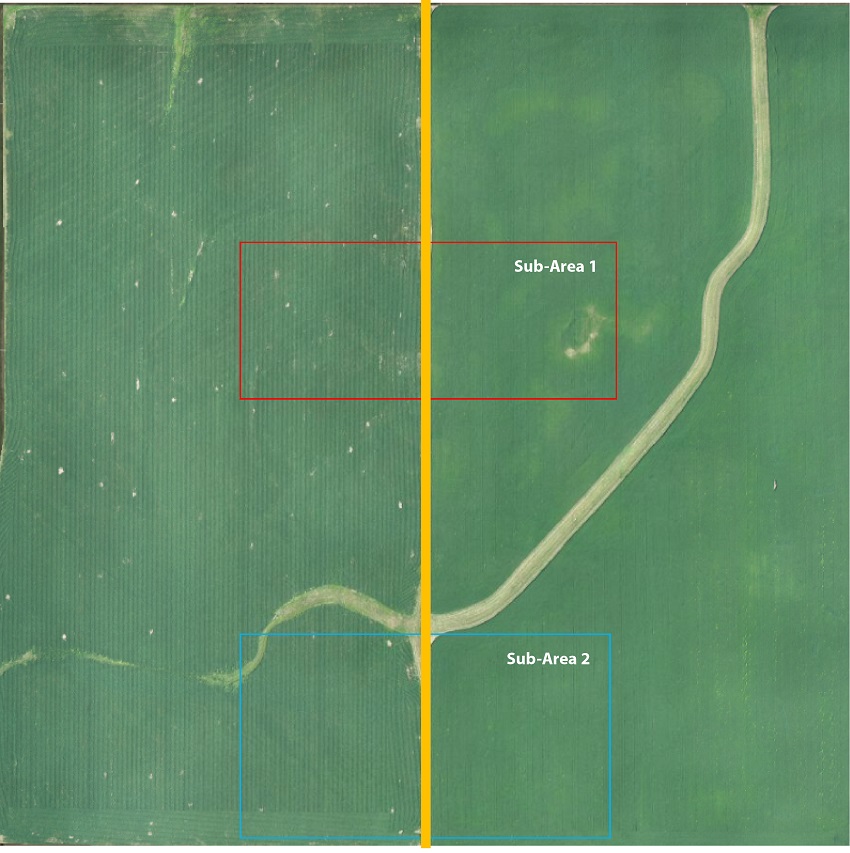Giant ragweed in cover crops
Flown by John Scott, Digital Agriculture Extension Coordinator, Purdue Extension
Field visit with Joe Rorick, Agronomist, Conservation Cropping Systems Initiative
In addition to the cover crop comparison above, some strips of cereal rye/hairy vetch were planted to evaluate the effects against next year’s crop. This field was previously planted in corn and going to soybeans. Cover crop was interseeded into the corn about V4-V5 in June. The overhead image shows the cover crop in early May prior to termination and soybean planting. It is possible to clearly see the green strips of cover crop and some areas of weeds. This field traditionally struggles with Giant Ragweed.
The ground-based image shows the difference between the cover crop and untreated strips even more clearly and shows the height of the cover crop. The untreated is on the left-side of the image and the cover crop on the right. The image taken on the tailgate shows Giant Ragweed samples collected from strips with cover crop (right) and those untreated, without cover crops (left). The plants from the untreated are healthier, greener plants while the weeds from the cover crop strips are struggling likely due to competition for resources from the cereal rye.










